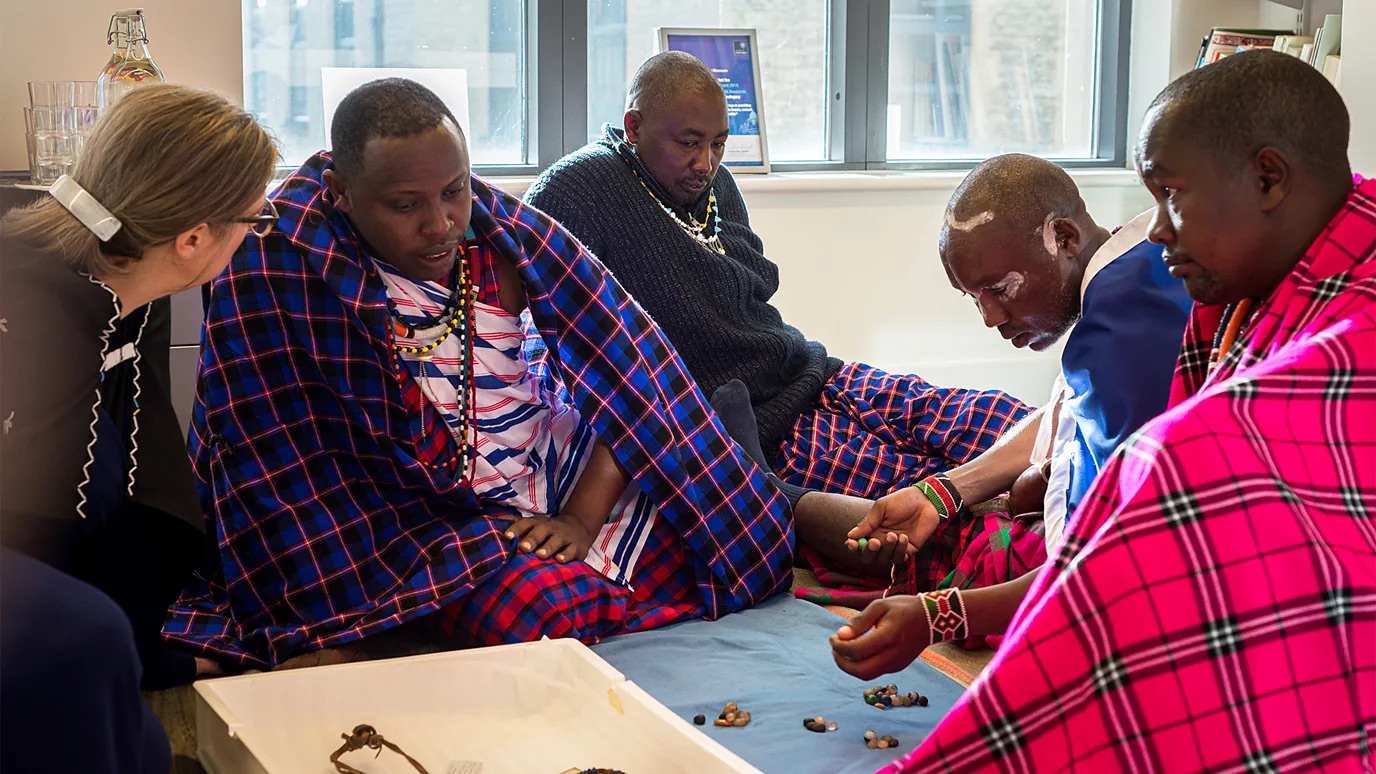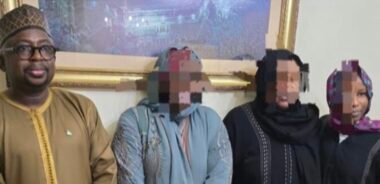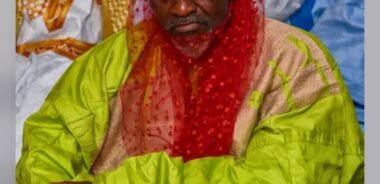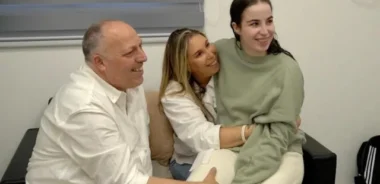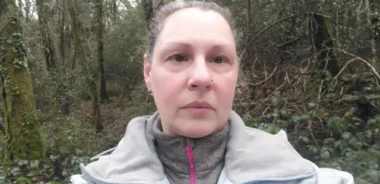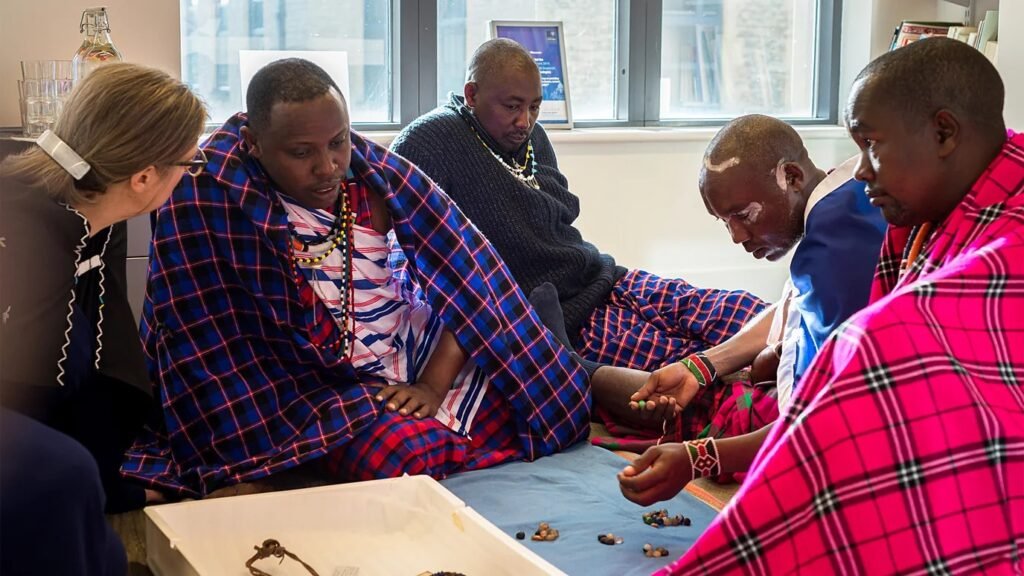
The return of stolen objects is helping Maasai people to rediscover community bonds lost generations ago.
On a damp September morning, at the back entrance of the Pitt Rivers Museum in Oxford, UK, a small crowd were huddled around colourfully dressed men rubbing a stick onto a piece of wood. I was watching them make fire, in a traditional Maasai way. After a few minutes there was smoke, then it turned into fire.
Samwel Nangiria, the leader of the delegation, explained the importance of fire for initiating a healing ritual of the Maasai – a pastoralist ethnic group in East Africa. He and the other jewellery-adorned Maasai representatives followed museum staff as they carried five candles into a meeting room. There, the candles were placed on a table draped in a cloth.
The ritual continued with the drinking of herbal tea from small bowls. Nangiria explained that these teas, with the delightful alternative names of snot berry and whistling thorn, are believed to have calming properties.
This calm was important to counterbalance the emotional intensity of the morning’s primary activity: reuniting Maasai residents of Kenya and Tanzania with precious heirlooms lost to their families, in some cases for over 100 years.
At one point, the only sounds that could be heard in the room were the tinkling of jewellery and the muffled weeping of the Maasai delegation. Ruth Sintamei Kilusu, an HR professional from Eastern Kenya who is supporting the project, explained that each item was like a brother who was lost without his body being found – until now.
At one point, the only sounds that could be heard in the room were the tinkling of jewellery and the muffled weeping of the Maasai delegation. Ruth Sintamei Kilusu, an HR professional from Eastern Kenya who is supporting the project, explained that each item was like a brother who was lost without his body being found – until now.
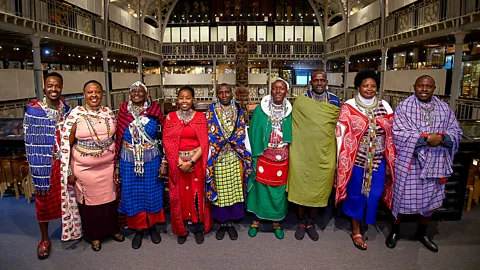
Instead of East Africa, these items had been sitting in the Pitt Rivers Museum, an influential anthropology and archaeology institution that is part of the University of Oxford. It wasn’t until 2017 that questions started to arise about their provenance.
One day, Nangiria had been visiting the museum as part of an Indigenous training programme run by InsightShare, an Oxford NGO focused on participatory video, where a community helps to create its own film. He was stunned to see samples of the 188-item Maasai collection stored in the museum, some of which were sacred, and some of which had inaccurate labels. Nangiria couldn’t understand why they were there.
This was the start of the Living Cultures project. Months after his initial visit, using the participatory video skills cultivated during InsightShare training, Nangiria sent the museum a video of Maasai women discussing how annoyed they were that those objects were in a museum in the UK. The museum responded with a video inviting them to visit.
The Maasai representatives who visited in 2018 identified five objects, out of the 188, that were especially sensitive. These are objects of inheritance, meant to stay within the family. They certainly cannot be sold or traded outside the Maasai nation, Nangiria explains. For them to be out of place suggests that a tragedy has occurred, and that other harm will follow, he says.
The Maasai representatives realised that spiritual consultation was needed and decided to seek out the descendants of the families to whom the five selected items belonged. It was not a simple process.
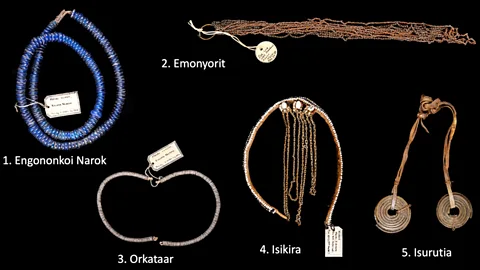
European researchers, including anthropology-trained hotelier and philanthropist Jessica Frankopan, dug into the museum’s archives, learning that the collectors had included colonial officers, and that there had been periods of drought and bovine disease in East Africa when the items were seized.
Rather than listening just to colonial sources of knowledge, museum director Laura Van Broekhoven remembered thinking, “What if we start listening to the communities who actually know about these objects?” The lineage tracing involved what the Pitt Rivers Museum refers to as “epistemological equity” – the idea of addressing power imbalances in how knowledge is valued.
This was also important for practical reasons, as the museum hit some dead ends. They found that it was not possible to trace the owners using their usual method of searching the museum’s records.
The Maasai community knowledge was not preserved in written texts. First, the oloiboni(spiritual leader) Lemaron Ole Parit used an enkidong – a sacred calabash, or gourd, which contains stones that reveal patterns. This, he says, helps to determine which family corresponded to each item. Then the Maasai researchers turned to oral history, interviews with neighbours, and analysis of settlement patterns to find living ancestors of each historic owner. This was complicated by the colonial and postcolonial fracturing of Maasai lands.
Altogether, “we were really trying to put together our ways of knowing”, Van Broekhoven explained. “It’s not easy to communicate completely different conceptualisations of how we know and how we experience objects or history.” Once the living relatives of each object had been identified, they were informed that the museum had them in its possession.
Noomutaitin Ene Naisho, of Leshuta, Kenya, remembered being frightened when she was told that an isurutia, a necklace with two spiral circles, belonging to an ancestor of hers was currently sitting in a back room in Oxford.
Mokompo Ole Simel, another spiritual leader, said that he wanted the reconciliation around each object to be peaceful, not a legal entanglement. He indicated that the next step in the healing process would be a special reconciliation ceremony that traditionally takes place when one Maasai kills another.
These ceremonies took place in 2023, across four sites in Tanzania and Kenya. Despite the sombre origins, they were joyful occasions full of music and dancing. Several museum representatives attended with their families, in what Van Broekhoven called a show of respect and trust. The museum also transferred 49 cows to each family, a part of the reconciliation tradition; these cows were then distributed within the community.
Finally, the 2024 trip to Oxford brought family members face to face with the five items for the first time. However, one descendant, pastoralist Komesha Moseka Laizer, was missing: his UK visa had been denied. This was the latest indignity in a difficult year for his family, who in March were evicted from a Maasai villagearound Kilimanjaro International Airport, which was going to be expanded.
While Moseka was not able to see his family’s engononkoi narok (a blue necklace) in person, a member of the Maasai diaspora attended a reconciliation ceremony wearing his own such necklace. Boni Ole Mpario, a former safari guide in Kenya’s Maasai Mara who is now a civil servant in the UK, says that in his Maasai clan, a mother places these blue beads on the neck of a man as he transitions from warrior to junior elder. “It’s something very important to us,” he explains of this necklace that he wears every day. If his were to somehow end up in a distant museum, “I would really feel bad because it’s not for the world to see. It’s not there to be displayed.”
One descendant who was able to attend was Kumari Mpaema, who came to view his family’s orkataar, which entered the Pitt Rivers in 1904. Of this bracelet, which is passed down between father and son, Mpaema says, “This is a very sacred item. It is inheritance.”
